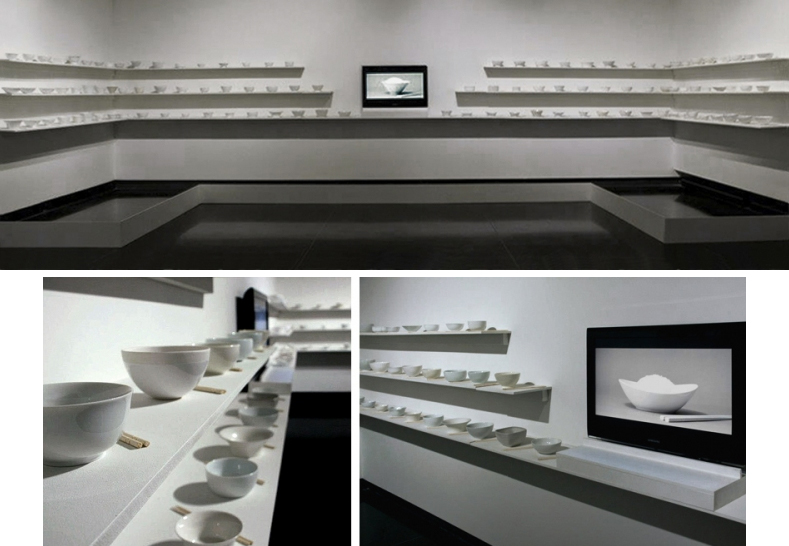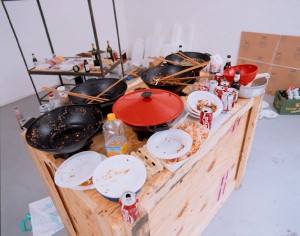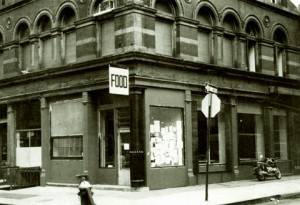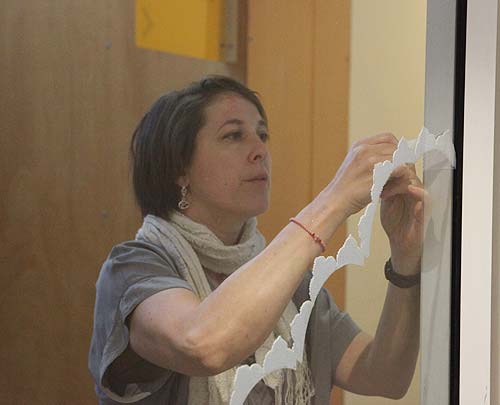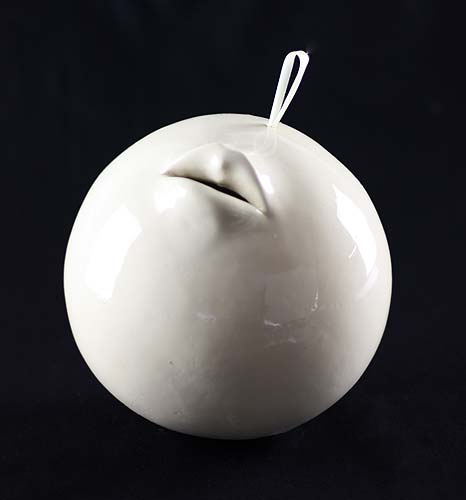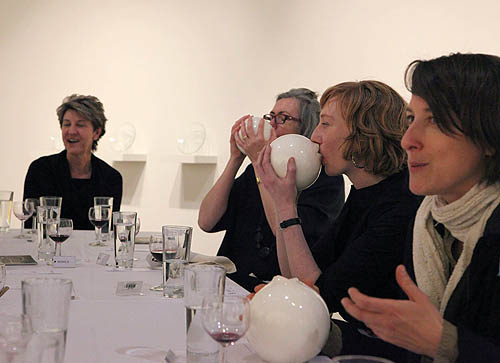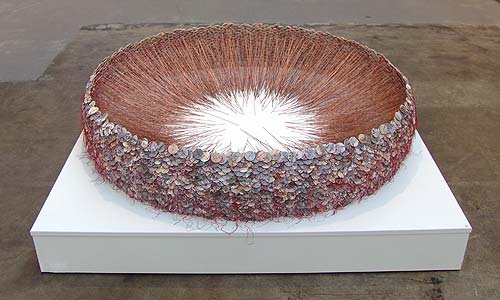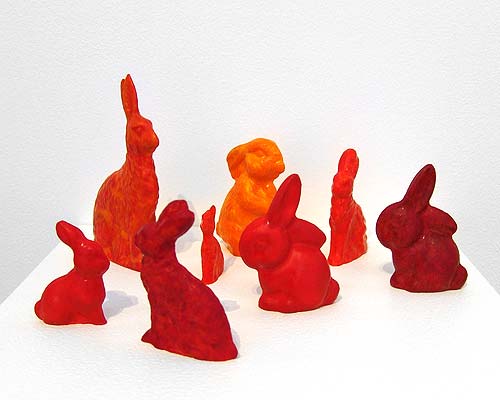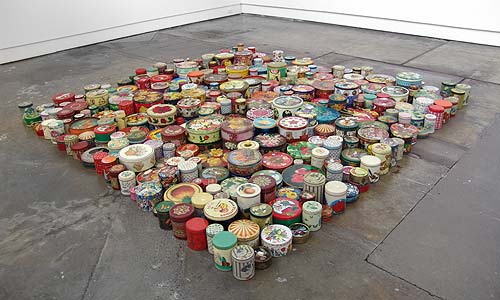Associated Readings:
Rituals and Social
Eroticism
Race
Gender
VIEW PROJECT SCHEDULE/DATES HERE
PROCESS:
Your project must create and/or stage a ritual or social function surrounding food. You will execute your event during class on your assigned day (unless other plans are approved beforehand – activities outside of class time, or at alternative locations, etc).
You must also provide a ‘recipe’ for your ritual/social function. Just like a standard recipe, yours will have an ingredients list and specific directions for executing your ritual/social function. It should be accompanied by at least 1 print-quality photograph (300dpi, at least 5 inches across/tall). All student recipes will be consolidated into a print-on-demand recipe book, which will be displayed at our exhibition at the end of the semester.
1. Students will be required to brainstorm at least 3 solutions to this project and verbally present those ideas, along with sketches for each idea, to the class. Sketches will be collected (put your name on them).
2. The class will give feedback, and based on this constructive criticism, students will select an idea to execute.
VIEW PROJECT SCHEDULE/DATES HERE
3. In addition to the ritual/social function, students will prepare an artist’s statement that will be included alongside your recipe in the book. Your statement should consider the following questions, but should be written in paragraph format (not a numbered question/answer format):
- What is this work about? (This is the idea, theme, message, or concept for your piece. Think of this as the thesis statement for your work.)
- Why do you want to do this work? (This is your explanation of the importance of the work and what it means to you)
- How will you do this work? What is it made of or out of? (This is how you envision the artwork happening—medium/a, actions, texts, audience/performer relationship, etc.)
- What do you want this work to do or accomplish? (This is the outcome or experience you anticipate for the work)
- How does it relate to food rituals/social functions?
4. Make sure you have arranged for documentation of the artwork if you cannot do it yourself (if it is a performance you are involved in yourself, etc).
5. There will be a full-class critique of each work on the day it is performed. The Ritual/Social Function presentation schedule will be as follows: VIEW PROJECT SCHEDULE/DATES HERE
6. After completing the artwork, you will complete a self-analysis on Blackboard.
- Discuss your work in terms of the components of an artwork. (subject/form/content/context)
- How does the work engage with elements and principles of design (whether the work is 2D, 3D, or 4D). Make sure to mention specific elements and specific principles.
- How was your project successful?
- How could the project be improved?
7. Turn in the title of your ritual/social function, ingredient list, directions, photograph(s), and artist statement for the Recipe Book.
8. Finally, upload documentation of your artwork to our YouTube Channel.
- Brainstorming/Sketchs = 3 points
- Execution of the project = 5 points
- Artist Statement (How well did you answer the questions? Did you provide a printed copy?)= 5 points
- Recipe Book Materials (correct/quality materials and turned in on time) = 3 points
- Quality of documentation and on-time upload = 5 points
- Critique participation = 3 points
- Self-Analysis on Blackboard = 8 points
Artists to Consider:
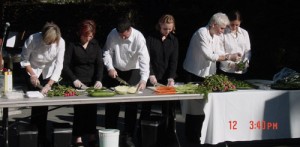
Alison Knowles, “Make a Salad” (1962 – ) performance/Fluxus Event Score
Chee Wang Ng “108 Global Rice Bowls” (2012) Mixed media with single-channel video with audio, 23′ x 8.5′ x 5.5′
Each clang corresponds to each of the 108 bowls, like a bell it pierces through emptiness of phenomena and enlighten the mind into awareness. 108 are the number of beads in a Buddhist rosary, a complete cycle of a prayer. Chinese diaspora diverse voices sing across the globe. A chronological display of 108 bowls with chopsticks as it appears in the video in the custom in situ installing – a dialectic intersection of the physical with the virtual.
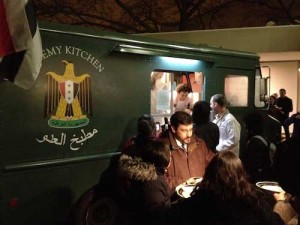
Michael Rakowitz – “Enemy Kitchen”
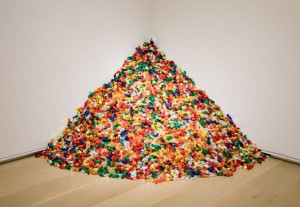
Felix Gonzalez-Torres – “Untitled” (Portrait of Ross in L.A.)
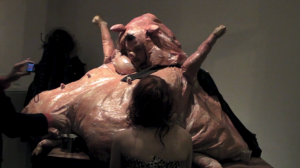
Jennifer Catron and Paul Outlaw, “Imeday Imeday Ollarday Icklenay” (2011)
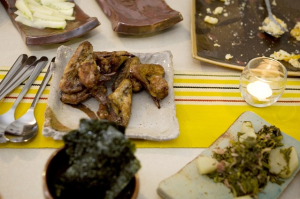
Theaster Gates “Soul Food Pavilion” (2012)
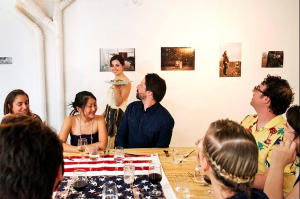
Laura Ginn, “Tomorrow We Will Feast Again on What We Catch” (2012)
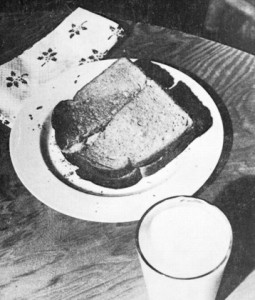
Alison Knowles. The Identical Lunch. (1973)
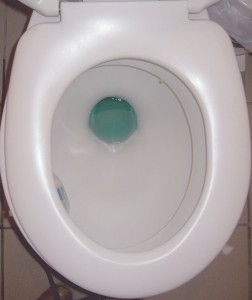
Yves Klein, “The Void” (1958).
“The exhibition was a white painted gallery space with nothing in it. On the opening night, he allowed groups of ten people to enter at a time to view the ’empty’ gallery. At the same time enjoying the cocktail which he gave out. The cocktail contained gin, cointreau and tonic. It also contained methylene blue which little to the visitors knowledge within a few hours would turn their pee blue. Just to note, the pee never turned to the full colour of the true Yves Klein Blue but it did turn blue.” (http://coatedarms.blogspot.com/2011/08/ode-to-yves-klein-blue.html)
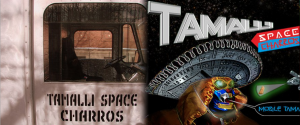
Chicago-based members of the Tamalli Space Charros Collective sell tamales out of the tamalespaceship, a food truck purchased off of eBay with decoration inspired by Mexican sci-fi wrestling films from the 1960s. Taking their cue from the Stridentists, a group of artists, musicians and writers active in Mexico in the 1920s focused on improving life through technology, the tamalespaceship uses internet based social networks to broadcast its menu and location. (http://glasstire.com/2011/03/02/the-ten-list-food-and-art/)
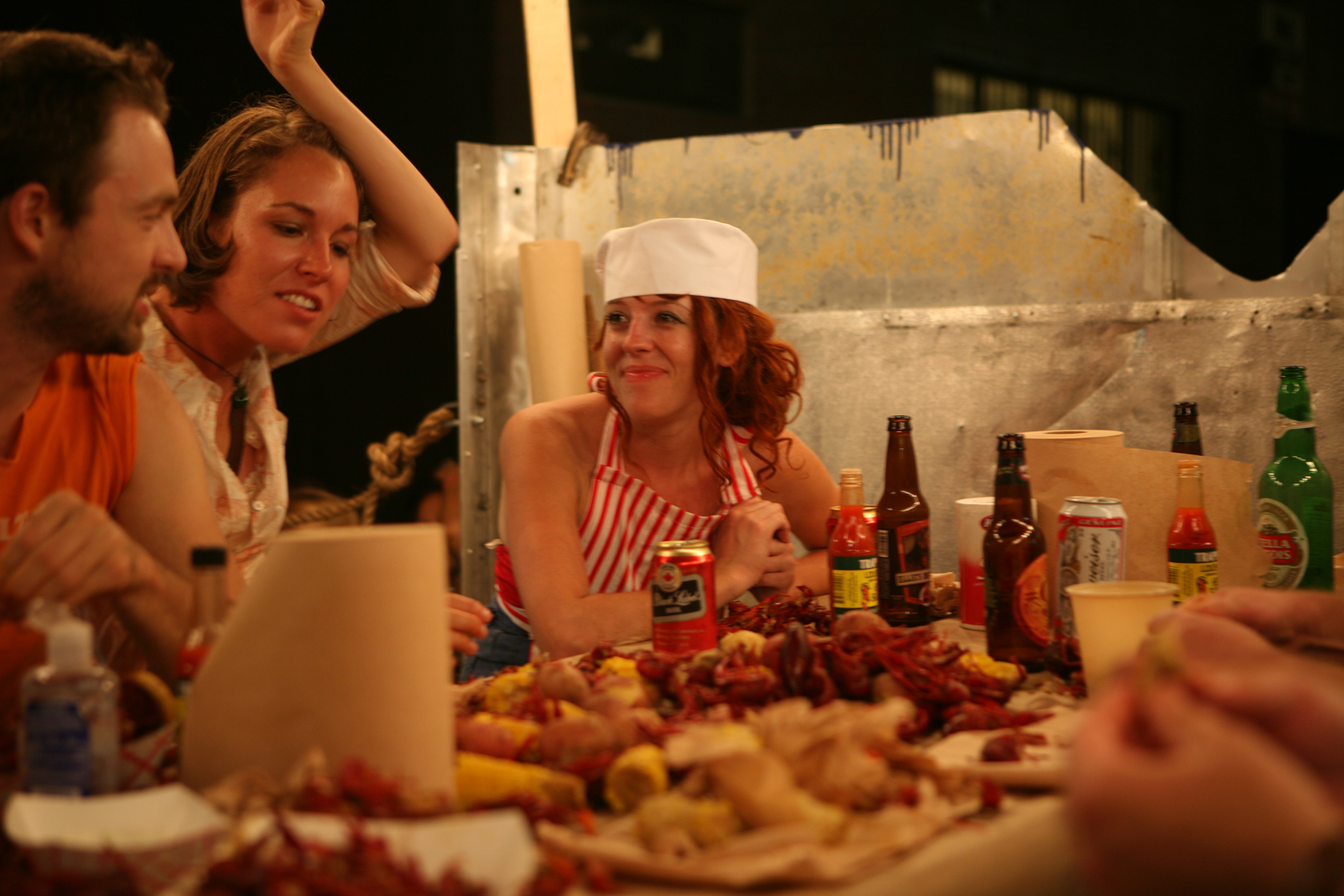
Jen and Outlaw’s Fish Fry Truck
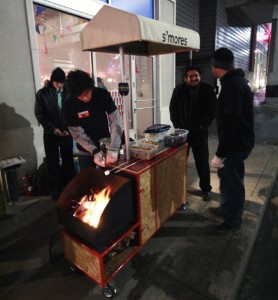
Kurt Flecksing and Sean Starovitz, “The S’mores Cart” (2010)
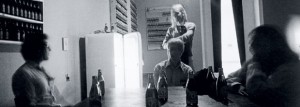
Tom Marioni, “The Act of Drinking Beer with Friends Is the Highest Form of Art” (1970 – 2008), 1979 installation view at SFMOMA; © 2008 Tom Marioni; photo: Paul Hoffman
Carol Goodden and Gordon Matta-Clark, “FOOD” (early 1970’s)
In response to the neighborhood’s lack of residential amenities, dancer and photographer Carol Goodden and sculptor Gordon Matta-Clark opened FOOD, a functional restaurant-cum-artwork (which Matta-Clark even tried to sell, unsuccessfully, to dealer Leo Castelli.) The restaurant created a place for locals to eat and congregate, and employed artists, dancers and musicians, working flexible schedules which allowed them time to focus on their craft. (http://glasstire.com/2011/03/02/the-ten-list-food-and-art/)
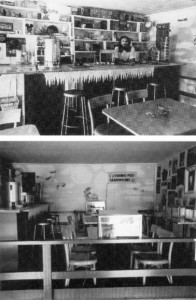
Allen Ruppersberg, Al’s Cafe, 1969-1995, x-traonline.org
Visitors to Al’s Café, which operated near downtown L.A. every Thursday night for three months in the fall of 1969, swore the diner looked as though in had been in business for years. But the classic Americana décor—checkered tablecloths, picture postcards and autographed photos—was purely the fabrication of artist Allen Ruppersberg. The food, prepared by Al himself and served by a staff of waitresses, looked nothing like average diner fare. The café served beer and coffee, but items like “small dish of pinecones and leaves” weren’t edible. Rupperberg’s unusual menu grew out of his earlier terrarium sculptures, and served as a sly response to the then-popular Earth Art movement. (http://glasstire.com/2011/03/02/the-ten-list-food-and-art/)
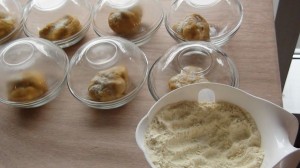
Marija Vogelzang, Pasta Cooking Station/Sauna, (2009)
For her contribution to Performa 09, self-proclaimed eating designer Marija Vogelzang installed a pasta cooking station/sauna in 41 Cooper Square. Visitors watched as the balls of dough they picked up upon entering were flattened and boiled in a pot of steaming water. Afterwards, participants had the option of adding pepper, olive oil or grated cheese before enjoying their freshly cooked pasta. Vogelzang found inspiration in the Italian Futurist Cookbook, which, years before the advent of the Atkins diet, warned readers that indulging in pasta would make them sluggish and overweight. In Vogelzang’s installation the steam, the heat and the carb-loaded pasta combined to intensify that effect. (http://glasstire.com/2011/03/02/the-ten-list-food-and-art/)
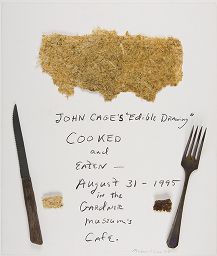
John Cage’s “Edible Drawing” cooked and eaten – August 31, 1995 in the Gardner Museum’s cafe 1995, Chef Michael Silver
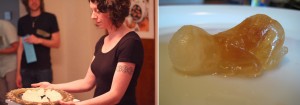
Clover Morell, “Nurturance: A sound + food performance” (2010) flavored ice baby edible, served with textual sound piece
Matina Bourmas, “Gifting” (2013) royal icing (royal icing (applied to the walls and windows)
Elizabeth Willing, “Mouth Cup” (2013) glazed ceramic, 15 x 15 x 15cm
Susanna Strati, Wreath (2012), communion wafers, copper, paper, silk thread, ink, graphite, pigment, shellac, 120 x 120 x 23cm
Irianna Kanellopoulou, “Bite me” (2012) moulded, handbuilt & hand painted Belgian chocolate, cocoa butter, food grade colouring – 8 pieces, dimensions variable
Christine Turner, “Lifescape” (2012) mixed media – biscuit tins, 250 x 250cm (dimensions variable)
